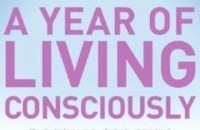A CONSCIOUS LIVING PRACTICE FOR TODAY – JUNE 5
 No one can make you feel inferior without your consent.
No one can make you feel inferior without your consent.
— Eleanor Roosevelt
PASSIVITY-AGGRESSION
In these days of easy-access psychological theory, with books, movies, and even sitcoms throwing around terms that used to be reserved for the darkened offices and leather couches of the analysts, the phrase passive-aggressive gets plenty of airplay. In its fifteen minutes of Warholian fame, the phrase lost its power; people lightly accuse others of being passive-aggressive and perform armchair diagnoses on the most casual of acquaintances. Give passivity and aggression—and the marriage of the two—your attention for a few days, though. Explore the partners and their pairing, because more than many other defenses, passive-aggressive behavior is a standard shot at people moving toward a conscious life in direct opposition to those around them.
First, the threat: Why is your commitment to honesty, to agreement-keeping, to acceptance of yourself and others, so loaded for those around you? It is a question well worth asking. The answer that resonates most deeply is that when you move into a conscious stance, you sometimes reflect back to significant others a less than flattering portrait of their own lives. Where you are joy and lightness, the friend living a half-life is anger and weight. Where you are truth, the parent trapped in old, tired patterns is deception. Where you are a lightning rod for sparks of creativity and blazing fires of warmth, the lover is a tight, uncomfortable mass of chilled repression. You all serve as mirrors for others; through relationship, you see yourself in certain ways, but when you clean the mirror—although I believe that you will be delighted with the reflection that greets you—others, seeing their own reflection next to yours, may feel pale and unhealthy in comparison.
A CONSCIOUS LIVING PRACTICE FOR TODAY – JUNE 5
Take a few moments to think about a key person in your life who may have resisted your attempts at change in the past. Think about whether you attempted to push or pull that person toward change with you—if so, that may be a part of the resistance you experienced. Spend time thinking of one way in which you can reassure this person that your journey of change is of you and for you, and that it is not your intention to take hostages along for the ride.
Purchase “A Year of Living Consciously” by clicking the cover below:



